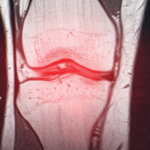The Network next developed a consensus digestion protocol. The chosen methodology had to allow for the successful de-aggregation of synovium, release of fibroblast populations and preservation of cell surface markers for analysis. To achieve these goals, they paired mechanical and enzymatic digestion (Liberase TL).
The investigators put their standard operating procedure to the test as they sent synovial tissue acquired from biopsies performed at multiple sites across the U.S. to the Brigham and Women’s Hospital for centralized tissue processing. The digestion protocol resulted in single-cell suspensions of high-quality cells from cryopreserved tissue.
“We don’t see a substantial reduction in the number of cells collected after freezing the tissue,” explained Dr. Rao. “Overall, the samples have looked quite good.”
Dr. Brenner reflected on the data and sample flow in the RA pipeline and concluded, “That was a really huge undertaking.”
The good news was that no obvious batch effects were in the CyTOF and RNAseq results. “This is actually really amazing to have done this well,” exclaimed Dr. Brenner. Moreover, each donor was typically able to provide 300 cells for droplet-based, single-cell RNAseq (scRNAseq), which means that “you’re now looking at everything that’s there,” explained Dr. Brenner.
Results Begin to Come In
The CyTOF allows for the simultaneous examination of 40 dimensions. This process should make it possible for investigators to discover and track new cell populations, such as peripheral T helper cells. CyTOF should also be capable of tracking clusters of synovial cells as they change by disease activity and response to therapy. Further, the pairing of cell samples with tissue samples makes it possible to correlate flow cytometry and histology.
The Phase I results have not yet been fully analyzed, but “there are several populations of fibroblasts that are changing,” enthused Dr. Brenner. The team of researchers is analyzing data and preparing abstracts and papers that should soon be appearing in the scientific literature. Moreover, all data will be made public on Nov. 1.
Investigators are also now recruiting patients for Phase II. These patients will be stratified into four treatment groups: disease-modifying anti-rheumatic drug naive, active disease on methotrexate, active disease on anti-tumor necrosis factor and normal comparators. They will undergo ultrasound-guided research biopsies, and the samples will be sent in for analysis.
The excitement in the room was palpable. “I hope we’ve convinced you of the feasibility of doing this type of study on a large scale across many sites,” concluded Dr. Rao. “This [research] could serve as a model that could be applied to other autoimmune diseases in the future.”
